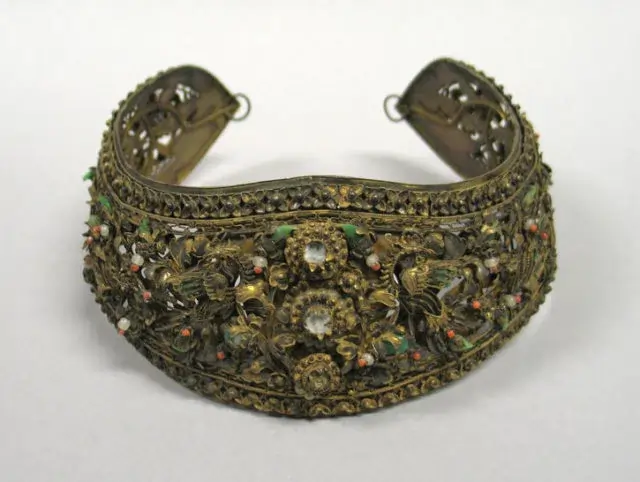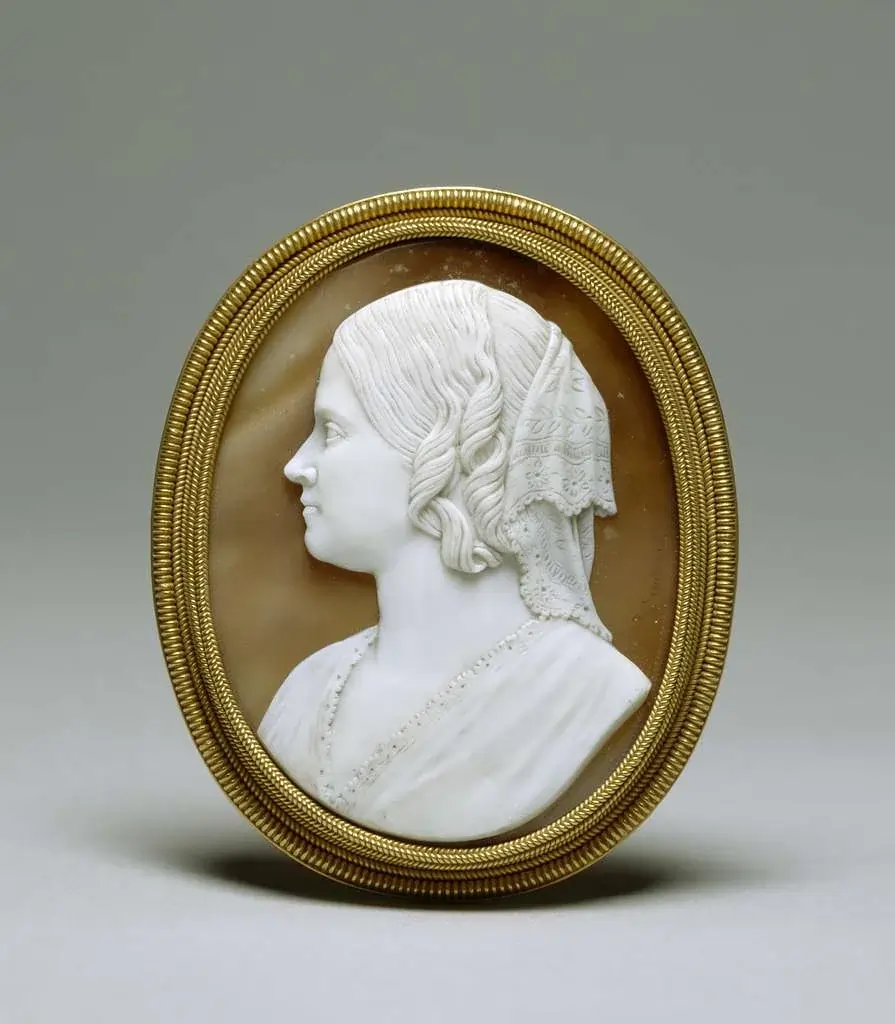Ancient civilizations thought that crowns held meaning beyond the realm of the living—they were seen as symbols of status and spiritual significance that extended into the afterlife as well. Burial crowns discovered in tombs offer insights, into how our predecessors perceived life after death and reveal intriguing narratives from different cultural backgrounds. From burial crowns in ancient Greece to more modest funeral crown styles across civilizations worldwide; these ceremonial headpieces have held significance in the funeral practices of humanity, throughout the ages. In this manual we will delve into the importance of burial crowns and delve into how they have evolved through various societies over time and explore why historians and cultural experts are still fascinated by them to this day.
Origins and Cultural Significance
Throughout times, in civilizations of olden days lie intriguing traces of burial crown customs; these revered artifacts symbolized a profound transition to the realm, beyond life.
Ancient Burial Crown Traditions
During times, in Greece’s history the usage of crowns held importance in funeral rituals where the deceased were adorned with golden wreaths during the prothesis ceremony (body laying out). These valuable crowns for burial became more prevalent as time went on during the period. They represented the high social standing of those who passed away. The custom of buryng individuals, with crowns was not limited to Greece. This is evidenced by the tradition of Funeral Crowns known as Corona Funebris among Polish kings in the 1500s.
Religious and Spiritual Symbolism
The profound meaning, behind burial crowns is firmly established in scriptures and faith traditions. The Book of Revelation 2:10 mentions the reward of “crown of life” symbolizing a concept that has influenced coronation rituals. Religious imagery frequently intertwines elements to convey messages.
- The crown with cross – representing victory over death
- Laurel wreaths – signifying divine authority
- Golden crowns – symbolizing eternal glory
Cultural Variations Across Civilizations
Different civilizations developed unique interpretations of burial crowns, each reflecting their beliefs about death and the afterlife:
| Culture | Crown Significance | Traditional Materials |
| Ancient Egyptian | Symbol of divine passage | Gold and precious stones |
| Greek Classical | Mark of achievement | Laurel and olive wreaths |
| African American | Recognition of dignity | Jeweled ceremonial crowns |
The Bo people, in the Guizhou province of China included crown features in their cliff-burial customs as they believed these decorations would bring blessings to the relatives left behind after a passing away ceremony was held for them on the cliff-sides where they were buried or entombed inside tombs built into mountainsides or cliff walls. In contrast African societies across regions developed crowning rituals that turned into vibrant events celebrating life and change with widespread involvement from the community and observed specific ceremonial practices during such festive occasions and ceremonies of transition marking significant changes, in individual life stages or societal events.
These various customs showcase how burial crowns moved beyond being items and evolved into significant representations of cultural heritage and beliefs, in the supernatural realm, after death.
Royal Burial Traditions
The majesty of royal burial customs has always fascinated us deeply. The significance of crowns, in representing the transfer of authority and divine power, over time and generations can be seen vividly in the elaborate ceremonies of the British monarchy; where the crown stands as a powerful symbol of both earthly governance and sacred ties.
Crown as Symbol of Divine Authority
During royal funerals we can see that the crown holds significance beyond being ornamental. The arrangement of the Imperial State Crown orb and scepter, on the king’s coffin signifies the power in passing. These special items serve as a reminder that kings act as mediators, between heaven and earth. The orb is decorated with 365 diamonds. Crowned with a cross emphasizing that worldly authority ultimately comes from sources.
Differences between Living and Burial Crowns
We distinguish several key differences between coronation and burial crowns:
- Coronation crowns like St. Edward’s Crown symbolize the beginning of reign
- Burial crowns represent the completion of earthly duties
- The Imperial State Crown serves dual purposes in life and death
- Funeral crowns often incorporate specific religious symbols
Notable Royal Burial Crown Ceremonies
Among the most significant ceremonies we’ve documented, Queen Elizabeth I’s funeral in 1603 stands as a remarkable example of royal burial traditions. The procession included:
| Ceremonial Element | Symbolic Meaning |
| Purple Velvet Coffin | Royal dignity |
| Wooden Effigy | Continuation of authority |
| Crown, Orb, Scepter | Symbols of sovereignty |
The development of these rituals progressed during the reign of Queen Victoria’s era when she personally chose a covering of the usual black, for her coffin; this decision established fresh norms for royal funerals. We have witnessed the evolution of these customs while upholding their symbolism; for instance the Lord Chamberlain breaking his white staff to signify the conclusion of service, to the departed monarch.
Contemporary royal funeral rituals preserve aspects while adjusting to modern requirements. The act of placing the crown jewels on the casket, alongside the Royal Standard remains a symbol of the power held by these monarch s throughout their lives and even, in death.
Modern Cultural Adaptations
In today’s ceremonies we observe an evolution of burial crown rituals modifying age old practices to meet present day requirements while upholding their profound spiritual importance.
Contemporary Funeral Crown Practices
Today’s funeral homes offer various crown options that reflect modern sensibilities while honoring traditional meanings. We commonly encounter these types:
| Crown Type | Significance | Common Usage |
| Costume Crowns | Celebration of life | Contemporary services |
| Flower Crowns | Natural connection | Traditional ceremonies |
| Wooden Crowns | Earth connection | Nature-focused services |
| DIY Crowns | Personal tribute | Family-created memorials |
African American Crowning Ceremonies
We observe a particularly meaningful adaptation in African American home going ceremonies, where the crowning ritual holds special significance. The ceremony typically occurs before the final viewing, with these key elements:
- Musical accompaniment with spiritual hymns
- Presentation of the crown by family or officiant
- Placement of crown symbolizing eternal life
- Community participation in celebration
The crown is an emblem that honors and respects the departed as a symbol of royalty, during their lifetime and even, in death—a practice rooted in allusions intertwined with cultural customs that commemorate the person’s life story.
Evolution of Burial Crown Traditions
In recent decades, there has been a shift, in burial crown traditions, towards more personalized and modern ceremonies that incorporate a mix of traditional and contemporary elements to reflect the individuality and accomplishments of the deceased rather than sticking to conventional styles of design. The practice has also moved beyond settings to include occasions celebrating life while still upholding the fundamental values of respect and dignity.
The intricate details of these rituals differ depending on the preferences of the family and the customs of the community; some prefer festivities while others opt for quieter gatherings that are more personal in nature. This ability to choose showcases how burial customs evolve over time while still upholding their core objective of paying final respects to the departed soul.
Symbolic Elements and Meanings
The complex symbols found in burial crowns shed light on beliefs surrounding death, dignity and the afterlife while also symbolizing dignity and respect, for the deceased individuals, within various communities.
Materials and Their Significance
When considering burial crowns, in contexts one can observe that the selection of materials holds symbolism and significance beyond mere aesthetics alone. The preference for gold as a choice stands out due to its association with notions of reverence and immortality; these symbolic meanings were particularly prominent in ancient Korean civilizations where the intricate metalwork, on gold crowns showcased a blend of artistic prowess and spiritual connotations.
| Material | Symbolic Meaning | Cultural Context |
| Gold | Divine authority | Royal ceremonies |
| Flowers | Natural cycle | European traditions |
| Wood | Earth connection | Contemporary services |
| Costume materials | Celebration | Modern adaptations |
Design Elements and Symbolism
In our examination of burial crown designs, we observe recurring motifs that carry specific meanings:
- Plant Motifs: Represent eternal life and growth
- Antler Designs: Symbolize connection to spiritual realms
- Geometric Patterns: Express divine order and harmony
- Cross Elements: Indicate Christian faith and resurrection
The craftsmanship of these elements, particularly in ancient gold burial crowns, reflects sophisticated metallurgical techniques that we still admire today.
Regional Variations in Crown Symbolism
We find fascinating differences in crown symbolism across cultures. In Jewish traditions, the crown represents the “Crown of Good Name,” honoring noble character. European burial traditions often incorporated flower crowns for unmarried women, symbolizing their spiritual marriage to Christ. The Korean kingdoms developed particularly elaborate crown symbolism, where intricate designs connected the deceased to both earthly status and spiritual realms.
Modern interpretations maintain these symbolic traditions while adapting to contemporary needs. We see this evolution in African American crowning ceremonies, where the crown symbolizes recognition of dignity and grace, transforming ancient customs into meaningful modern rituals.
Conclusion
Humanity’s profound convictions regarding death and the divine are represented by burial crowns—a symbol of dignity and spiritual connections that have evolved over time from Greek gold wreaths to contemporary ceremonial headwear with tales reflective of various cultural norms and spiritual ideologies.
The customs surrounding burials have had an impact, on contemporary practices and rituals that are still observed today. Throughout history various societies have incorporated crown symbols into their traditions in ways that reflect their backgrounds. For example: the Egyptians used crowns as symbols of transition while African Americans integrate them into home going rites.
The materials and styles of burial crowns carry significance that goes beyond mere ornamentation. Gold symbolizes power whereas elements found in nature as flowers establish a connection, between the departed and the natural world. These thoughtful selections showcase how burial crowns act as links, between the spiritual domains.
Modern understandings of burial crown customs demonstrate their enduring importance, in today’s world. By upholding aspects and adjusting to accommodate individuality and cultural variety these rituals remain meaningful in commemorating the deceased.
FAQs
What is the historical importance of crowns?
Crowns have been symbols of authority, status, and distinction for thousands of years, worn by monarchs and religious figures alike. This overview spans a variety of unique and significant crowns from different cultures around the world, from ancient Egypt to contemporary Britain.
What role does a crowning ceremony play in a funeral?
In funeral traditions, particularly among Christians, the crowning ceremony is a celebration of the deceased’s life of faith, symbolizing the eternal reward believed to be granted for a virtuous life.
Why are burial rites significant?
Burial rites are crucial as they show respect for the deceased, reinforce societal beliefs about the afterlife, and provide closure for those mourning. These rituals reflect cultural values related to social status and community identity, helping to honor ancestors and preserve traditions through generations.
Can you explain the crowning ceremony in African American funerals?
In African American and Black Canadian cultures, the crowning ceremony is an integral part of the home going service. This ceremony involves a family member or an officiate presenting and placing a crown on the deceased’s head inside the coffin, typically before the final viewing and benediction.



